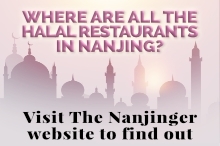Bonds neither supplied by nature nor birthright, a connection far beyond that of mere friends; that not of lovers, and not blood related. A sub group of people that help one another grow, who support one another, financially, spiritually, and emotionally.
Sharing a kinsmanship inconceivable to those outside their tight-knit circle, say hello to the “Shamate” (杀马特).
Deliberately named through a nonsensical transliteration of the English word “smart”, the Shamate live their alternative lives on the fringes of China’s cities. Appearing part gypsy, part sci-fi cult, their countrymates deride them, saying they have weird hairstyles, weird clothes, heavy makeup and a strange attitude. Intellectual circles attempt to account for them as the unwanted, lost and forgotten children of China’s economic progress.
With half of China’s people now living in the cities, and at least within glimpse of a Range Rover dealership, many have good reason to suppose their lives are on the up.
They have become sophisticated urbanites; endowed they feel with good taste, a moral upstanding, higher education and opportunities for a life lived well.
The other half remain in the countryside and the smaller cities, towns and villages. As almost anywhere else, youths therein largely run amok. In the case of the Shamate, this translates to a mix and match of punk and goth hairstyles, heavy make up and horrible dance music.
The former brand the latter outcasts, with their attempts at integrating into urban life and gaining attention with their cheap and kitsch fashion tastes. By trying to become mainstream themselves, the Shamate threaten the new found status quo of the first and second tier urbanites.
Now that they have become “xiaoqingxing” (well mannered and privileged youth), their feigned repulse serves only one purpose; to undermine the determination to ensure the Shamate never gain acceptance into their world.
Living as they do in the countryside of China or within one of her smaller under-developed cities, the individual Shamate is less likely to have the parental supervision or community support that might otherwise provide them with an escape from the underclass. Such a lack of structure in their lives has only strengthened the bonds between them; bonds they themselves describe as thicker than blood.
Their collective alienation has pushed this subculture further underground. Casting themselves out even from the mainstream Chinese Internet (which is a fairly shocking, unforgiving subculture in itself), the Shamate, who now number in the many millions it is estimated, assemble their families in places such as QQ Space, the networking site popular in fourth and fifth tier cities for its private groups.
Such has been the abuse lauded upon them, that the Shamate have imposed wait listing or approval processes before admitting new members into their family order, in fear of spies appearing in their midst.
Such is the view from within. To onlookers in Europe, another scene emerges. China lacks the development of popular culture that gave rise, beginning in the 1960s, to an explosion of creativity. While the Cultural Revolution raged in China, so thousands of kilometres to the west was burning the flames of passions ignited by an altogether different revolution, one vibrant in art, music and progressive politics.
It never happened in China. Its modern art movement has not been driven by long-haired, cross-legged, flower-powered adolescents with an aim no more complicated than to take down the establishment by lying down on the street across its very doors.
Instead, contemporary art has been the preserve of intellectuals, initiatives of State Owned Enterprises and gossip for coffee yuppies.
In merely doing their job of reflecting societal change, much domestic media has also joined in the communal looking down one’s nose at the Shamate.
Southern Reviews, a Guangzhou-based political and economic biweekly, labelled the sub culture, “the result of the semi-urbanization and incomplete modernization of individuals and groups”, and commented that the gulf between the Shamate and their well healed brothers and sisters in the first and second tier cities, “will never be bridged, no matter how many of their kidneys they sell”.
Such strong language could well mean the doors are about to be kicked down, behind which will be standing the Shamate, who within such a context, represent an at present unrealized vital component in the progression of modern Chinese culture.
With their itinerant lifestyle as the latest shock to the country’s grandparents, the Shamate are no more than evolution over their rebellious predecessors, in China or elsewhere.
The Motherland has little in the way of thrift shops that are populated by those of alternative lifestyles in other countries and for which the Shamate have no need; their creative fashion solutions are but a click or swipe away. Same stuff, different era. Type “1980s goth fashion” into Google followed by a similar search for “shamate”. Be hard pressed to tell the difference. Nothing much has changed really.
As the uninitiated, the Shamate come seeking answers. Having glimpsed the greater reality of what they are, they yearn to know more. Now it is time to transform their first few steps on the journey toward understanding their place in the evolution of popular culture into a more firm footed march toward the future.











